
The I-75 Cap is a locally led, and U.S. Department of Transportation supported, initiative to reconnect communities cut off from economic and social opportunities by prior transportation infrastructure decisions. The DDP is co-leading this planning initiative with the City of Detroit and Michigan Department of Transportation (MDOT).

I-75 Cap Community Visioning Session #3 Survey
The third I-75 Cap Visioning Session took place on Tuesday, October 29 from 6:00 p.m. – 7:30 p.m. at the MSU Detroit Center to continue efforts to review and develop plans to cap a section(s) of I-75 between Downtown and Midtown. During this session, the project team showcased the preferred alternative based on community feedback from the first two visioning sessions. The DDP is grateful to everyone who has participated in this important exercise, and we encourage you to take the survey distributed in the third session below.
DDP's Involvement
The Downtown Detroit Partnership (DDP) was awarded a $2 million grant from the federal Reconnecting Communities program to explore freeway capping options within the I-75 right-of-way (along Woodward Avenue from 3rd Avenue on the west to Brush Street on the east) owned by the MDOT. DDP is co-leading this planning initiative with the City of Detroit and MDOT.
Design Your Own I-75 Cap
Area Under Study
During the planning phase, DDP explored cap options within the Study Area, which extends from 3rd Avenue on the west to Brush Street on the east. Throughout initial phases of engagement, the team collected feedback on potential overbuild options and design elements for each segment.
This planning phase will considered a larger Benefit and Impact Area in which potential positive and negative effects from the overbuild options were assessed.
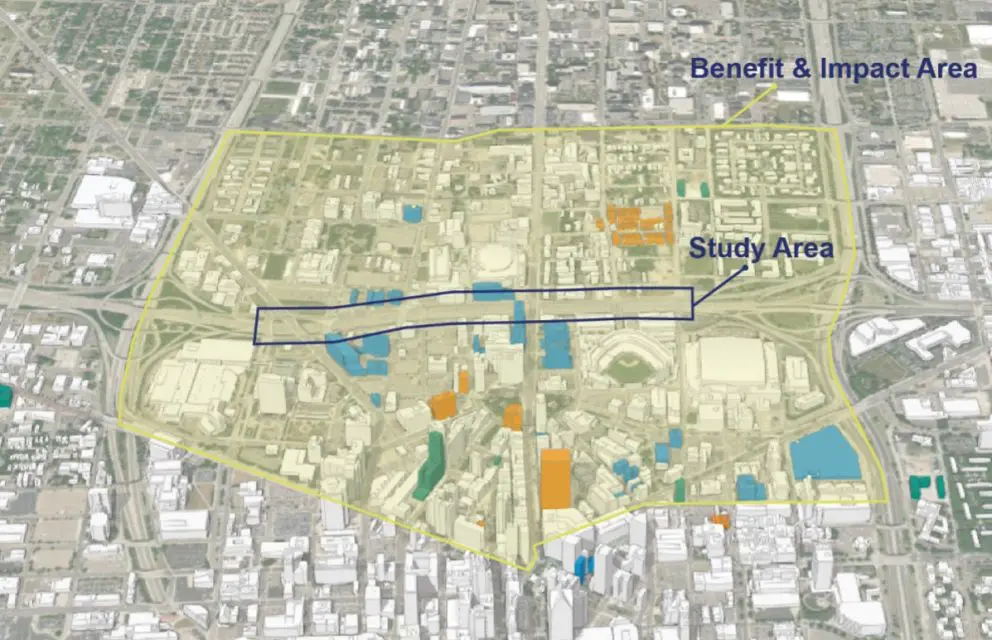
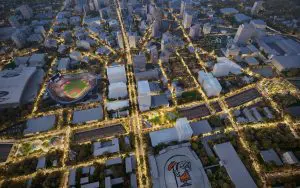
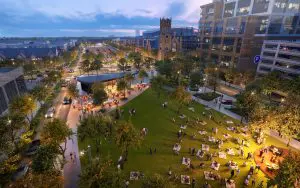
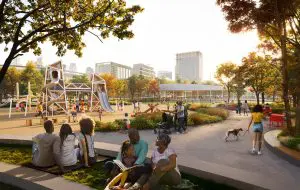
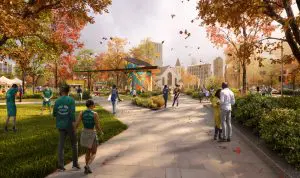
What is a Highway Cap?
Highway caps are structures built over highways with the intention of reconnecting communities harmed by this infrastructure. A range of benefits can result from these projects, including enhanced mobility, environmental benefits, and added public space serving as an anchor for current and future development.
I-75 is an Interstate Highway that runs north-south from Florida to the Upper Peninsula. Construction of the Downtown Detroit segment of I-75 started in the late 1950s, and the freeway replaced active urban uses with a barrier between Downtown and neighborhoods to the north. That barrier persists to this day. Building highway caps can help enhance local connectivity and quality of life while maintaining the regional and national transportation network.
Community Resources
Project Concept Report: This report provides a summary and references the work completed during the I-75 Cap Vision and Alternatives Analysis, with supporting documents available below.
Click here to view a collection of data that is used as a resource for the goal development, public engagement, and influencing ongoing and future efforts in the development of the I-75 cap project: Mapping Framework
Click here to read a case study of other projects that the design team reviewed and used as precedents to help inform their process, develop ideas, and understand what a capping project would look like: Project Precedent Report
Click here to read reports that summarize public engagement activities for the three phases of engagement of the I-75 Cap Study:
- Phase #1 Public Engagement Summary Reports
- Phase #2 Public Engagement Summary Reports
- Phase #3 Public Engagement Summary Reports
Click here to read the Evaluation Report, which evaluated four different design options based on a defined set of evaluation criteria. It also evaluated a scenario where improvements were made to the streetscapes in the study area and no caps were added: The Evaluation Report.
Timeline
DDP’s current Vision and Alternatives Analysis effort gathered public input over three phases as shown below. This effort is intended to help secure future funding for further design and construction.
- Phase 1 Vision and Alternatives Analysis: Assessing community goals and needs (May-June)
- Phase 2 Vision and Alternatives Analysis: Cap options evaluation (July-August)
- Phase 3 Vision and Alternatives Analysis: Preferred option development (September-October)
Funding is already secured for the further study and design of this project. The next phase will include further exploration to identify additional construction phase funding through public grant programs and private philanthropy. Future phases include:
- Feasibility Study (2025): This phase will include further study on cap public space planning and design, cap structural and design studies, and ongoing community engagement.
- Finalization of Construction Engineering (2026 to 2027): This phase will follow the feasibility study to refine designs and set up the project for construction.
- Construction (2028 or later): Once the design is finalized, construction will occur to create the caps as well as park programming on each cap. This is dependent on securing funding for the caps and public space amenities.
Completed Engagement Opportunities
Public and stakeholder engagement aims to foster inclusivity and transparency toward gathering information, educating stakeholders about the I-75 Cap, and providing an opportunity for public input. Public and stakeholder engagement for the Vision and Alternatives Analysis phase of work has wrapped up. There will be additional opportunities for public engagement as the project continues into the Feasibility Study.
Completed Engagement Activities: Vision and Alternatives Analysis
Public Meeting #1: July 2024 (Completed)
Read the meeting recap.
Review the workshop stations materials.
Review the Phase 1 Engagement Summary.
Public Meeting #2: August 2024 (Completed)
Read the meeting recap.
Review the Phase 2 Engagement Summary.
Public Meeting #3: October 29, 2024 (Completed)
Review the Phase 3 Engagement Summary.
For additional information and feedback, please send an email to: [email protected].
Thank you for your thoughts, support, and partnership.